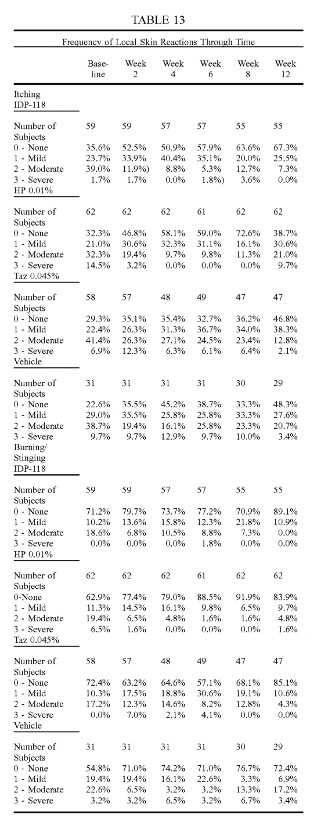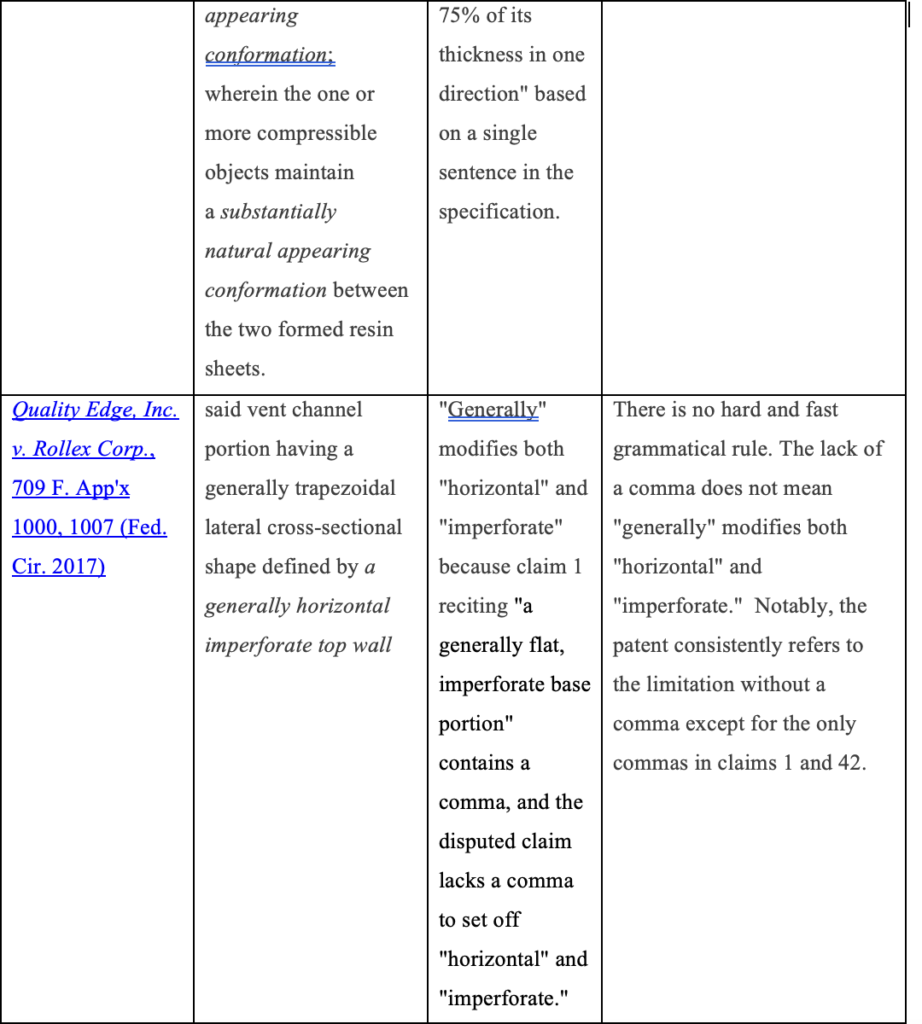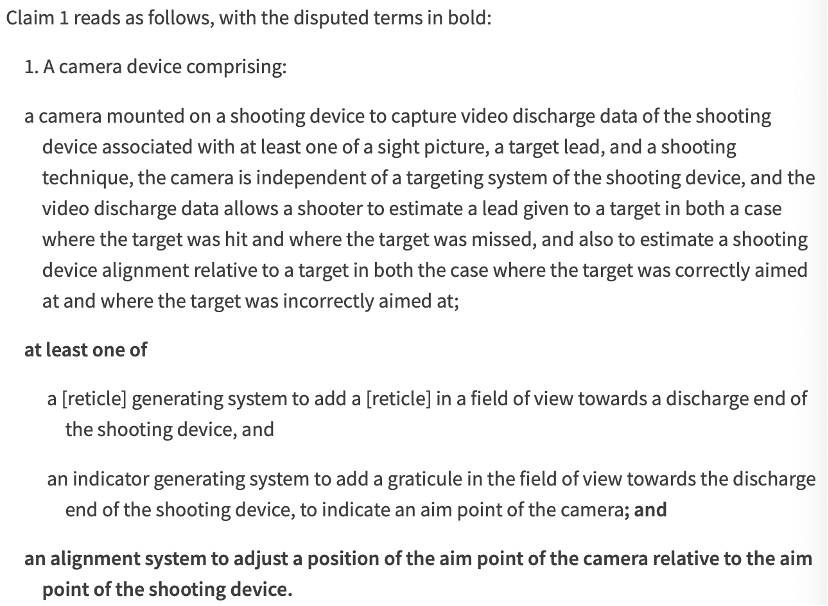“Although there are no hard and fast grammatical rules, it’s better to err on the side of caution, following rules that courts have recognized.”
 To quote a popular saying: “Let’s eat grandpa. Let’s eat, grandpa. Correct punctuation can save a person’s life.” And incorrect punctuation can cost millions of dollars. Do you know when to use a comma versus a semicolon? Do you know how to indent a plurality of elements in a claim? Do you know when to write “patent, copyright, or trademark” or “patent, copyright or trademark”? As Judge David J. Barron said: “For want of a comma, we have this case.”
To quote a popular saying: “Let’s eat grandpa. Let’s eat, grandpa. Correct punctuation can save a person’s life.” And incorrect punctuation can cost millions of dollars. Do you know when to use a comma versus a semicolon? Do you know how to indent a plurality of elements in a claim? Do you know when to write “patent, copyright, or trademark” or “patent, copyright or trademark”? As Judge David J. Barron said: “For want of a comma, we have this case.”
Courts and Commas
In Bausch Health Ireland Ltd. v. Padagis Israel Pharms. LTD, the district court relied on the commas’ placement to help construe the infringement issue. This case involved the drugs Duobrii® and Bryhali®, which treat the symptoms of Plaque Psoriasis. The patents at issue were U.S. 10251895B2 and claim 1 of U.S. 10426787B2. Claim 1 is as follows, with the disputed term italicized.
A topical pharmaceutical composition for treating psoriasis the composition comprising:
…
(b) a dermatologically acceptable carrier; … wherein the composition comprising the halobetasol propionate and the tazarotene at said concentrations is capable of providing synergistic efficacy and synergistic reduction of at least an adverse event selected from the group consisting of itching, burning, and stinging, for said treating.
The issue is whether “itching, burning, and stinging” should be construed as two groups: (1) Itching; and (2) Burning and stinging. Bausch relied on a data table in the specification that divides the data into two groups, one of which includes both burning and stinging, rather than the three groups proposed by Padagis. However, the court pointed to the textual description of the data in Table 13 that had commas to separate “burning” and “and stinging.” Therefore, the court took the claim as it is and constructed the claim into three groups by giving meaning to all the commas.

More Comma Stories
Punctuation and grammatical syntax do not live in a vacuum. They are like your clothes, varying greatly in color and format depending on the context. There are no hard and fast grammatical rules, but we can summarize preferred usages based on court decisions. Below is a chart of court cases where a comma was worth millions.





Indentation is as Important as Commas
Besides commas, the formatting of claims is also vital in claim interpretation. In Shotkam LLC v. Tachyon, Inc., the court considered whether “an alignment system” was part of the preceding “at least one of” list. The court emphasized the exact indentation of “an alignment system” and “at least one of” and such indentation demonstrated they were two independent elements. The court also highlighted the semicolon between “the camera” and “an alignment system,” which further proved that “an alignment system” is not part of the “at least one of” list.

Takeaways
The construction of statutes and patent claims use similar grammar rules, but claim interpretation has a skilled artisan component. Words and punctuation do not exist in a vacuum. They are interpreted in context from the point of someone skilled in the art. Although there are no hard and fast grammatical rules, it’s better to err on the side of caution, following rules that courts have recognized. Below are some examples.
Courts generally apply the doctrine of the last antecedent: lacking intentions to the contrary, qualifying words and phrases only modify the last antecedent. In contrast, when a comma separates a series of antecedents from a modifier, the modifier applies to every antecedent. For example, for claim limitation reciting “the executable tamper resistant key module including the generated private key and the encrypted predetermined data,” “including” only modifies “the executable tamper resistant key” and not other preceding antecedents.
Conjunctions, such as “and” or “or,” are commonly placed before the last item on a list. When multiple adjectives describe one term, to give even weight to each adjective, the adjectives shall be separated by serial commas, or conjunctions. The Quality Edge, Inc. and the Pfizer Inc. case mentioned above illustrate these semantics. In addition, in a claim of multiple elements, each element should be separated by a line indentation or semicolons. It is also essential to keep the application consistent in punctuation and grammatical syntax to avoid any unintended interpretation in patent litigations.
These are more guidance than rigid rules. Punctuation is like a fire alarm: unnoticeable, unimportant, and annoying, but a real lifesaver when an accident arises. The appropriate use of punctuation and the consistency between the claims and the specification is crucial to the ultimate interpretation and stability of claims—and ultimately, your patent.
Image Source: Deposit Photos
Author: Nelosa
Image ID: 69692913

![[IPWatchdog Logo]](https://ipwatchdog.com/wp-content/themes/IPWatchdog%20-%202023/assets/images/temp/logo-small@2x.png)

![[Advertisement]](https://ipwatchdog.com/wp-content/uploads/2024/04/Patent-Litigation-Masters-2024-sidebar-early-bird-ends-Apr-21-last-chance-700x500-1.jpg)

![[Advertisement]](https://ipwatchdog.com/wp-content/uploads/2021/12/WEBINAR-336-x-280-px.png)
![[Advertisement]](https://ipwatchdog.com/wp-content/uploads/2021/12/2021-Patent-Practice-on-Demand-recorded-Feb-2021-336-x-280.jpg)
![[Advertisement]](https://ipwatchdog.com/wp-content/uploads/2021/12/Ad-4-The-Invent-Patent-System™.png)







Join the Discussion
3 comments so far.
B
April 27, 2022 12:08 pmOutstanding piece you’ve written, Ms. Wu
Pro Say
April 25, 2022 03:03 pmIndeed, you already are.
Pro Say
April 25, 2022 03:02 pmMy kingdom for a comma.
Important considerations to know, understand, and keep in mind . . . always.
Thanks Wei. You’ll make an excellent addition to the IP world.
Indeed, you already have.